This website uses cookies so that we can provide you with the best user experience possible. Cookie information is stored in your browser and performs functions such as recognising you when you return to our website and helping our team to understand which sections of the website you find most interesting and useful.
UNDERSTANDING SURGE AND INTERACTION DAMAGE WHILE ALONGSIDE PORT INFRASTRUCTURE
Published: 5 July 2024
Occasionally, the Club receives claims regarding damages to Members’ ships caused by interactions or surges while alongside the berth with nearby port infrastructures. These damages typically involve the ship’s gangway placed on the wharf, incidents with mooring lines parting, or even contact damages between moored ships and berth facilities.
The common conclusion often attributes the interactions or hydrodynamic surges causing ships at berth to range to excessive speed or ships passing too closely to moored vessels. On the other hand, passing ships typically defend themselves by asserting that the ships alongside were not properly moored or that the mooring configuration was unsuitable.
HYDRODYNAMIC INTERACTIONS
Hydrodynamic interaction occurs when a ship moves through the water. As it moves, it creates a hydrodynamic pressure field around the hull, which will interact with other ships, or fixed objects such as the quayside structures or seabed.
Ships often encounter hydrodynamic interaction, with other ships or their surroundings, especially when navigating in shallow waters, narrow channels, or when passing too closely to other ships, fixed structures, obstructions, or riverbanks.
Ship-to-ship (STS) interactions happen when ships are navigating through shallow waters, and the water surrounding the underwater volume of the ship (displacement) gets displaced and pushed ahead and/or to the sides of the ship.
STS interactions can generate significant hydrodynamic forces that can impact the manoeuvrability of the ships. When considering the pressure distribution around each ship, they may experience a ‘repulsive’ or ‘attractive’ force, particularly noticeable when one ship overtakes or passes another on reciprocal courses at close range.
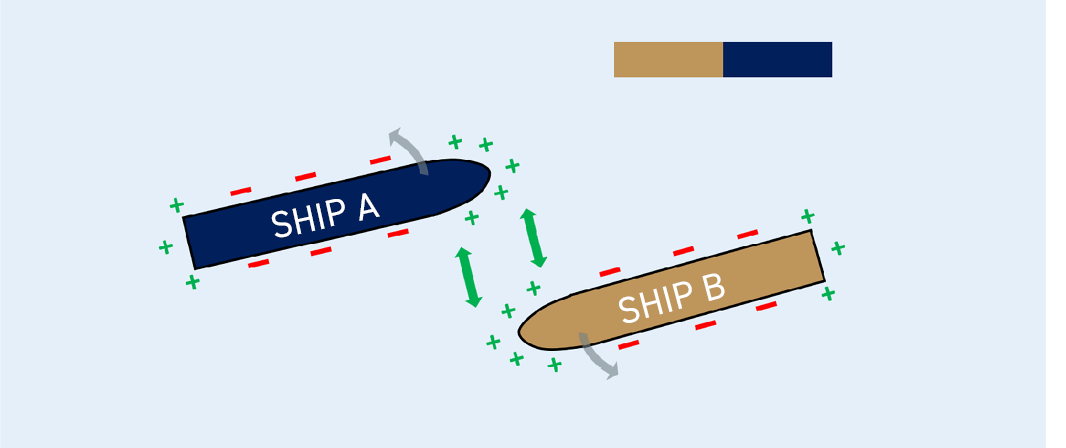 Figure 1: Initial approach between both ships on reciprocal courses, experiencing repulsive forces |
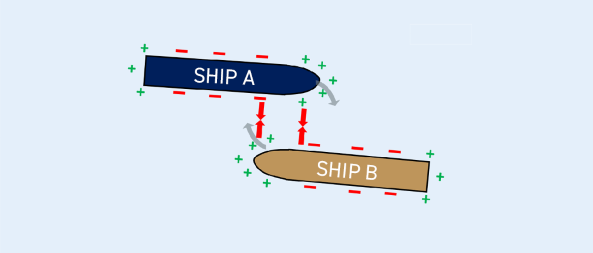 Figure 2: When the interaction occurs, both ships feel suction forces acting on their hulls |
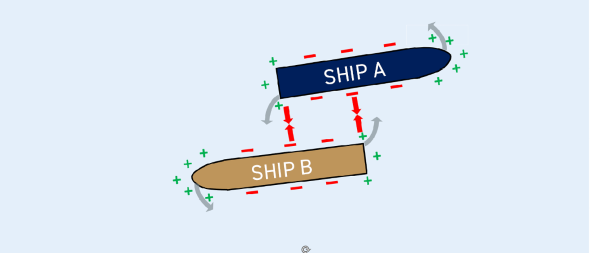 Figure 3: Both ships experience suction forces acting on the parallel body of the hull when passing |
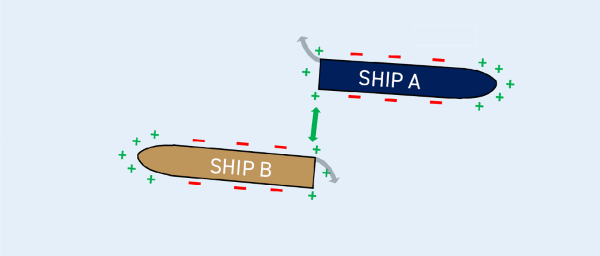 Figure 4: Both ships experience repulsive forces acting near the stern areas |
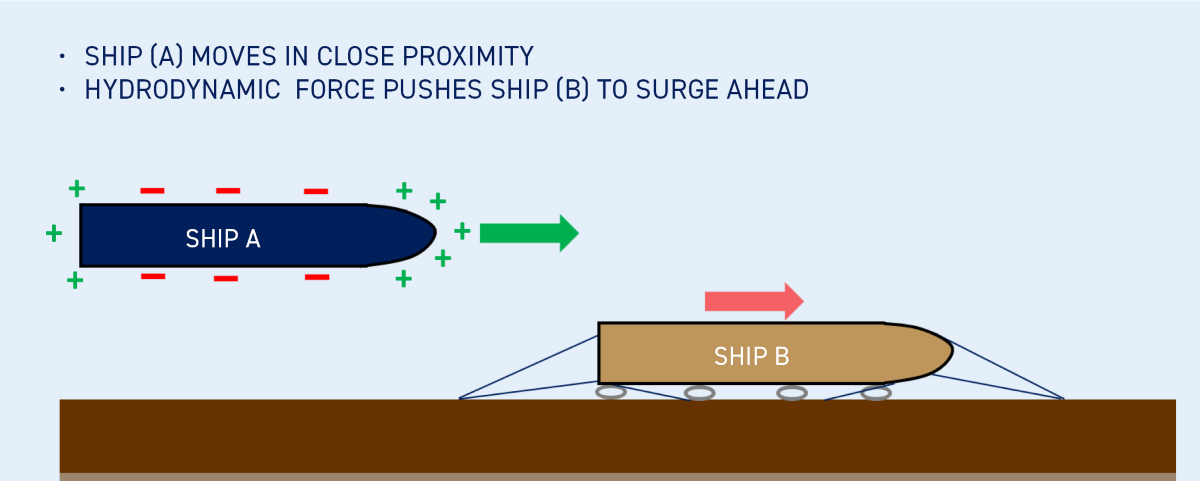
Figure 5: Ship-to-ship interaction when approaching moored ship
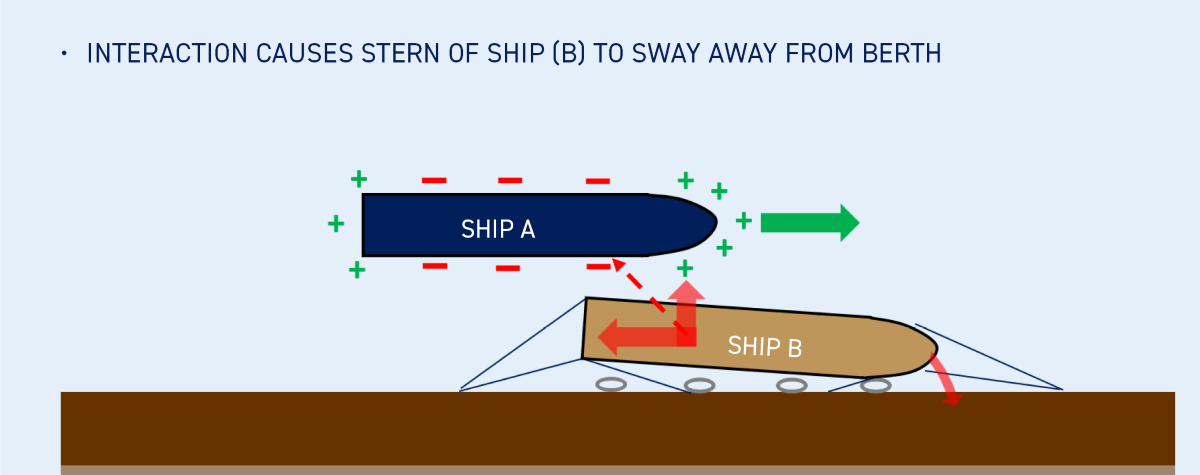
Figure 6: Ship-to-ship interaction when the bow passes moored ship
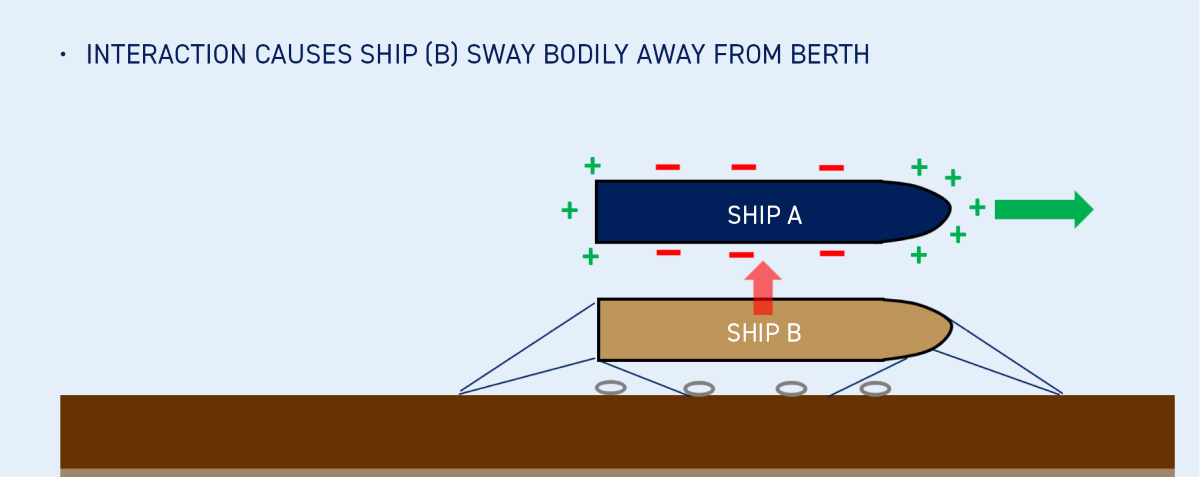
Figure 7: Ship-to-ship interaction when alongside moored ship
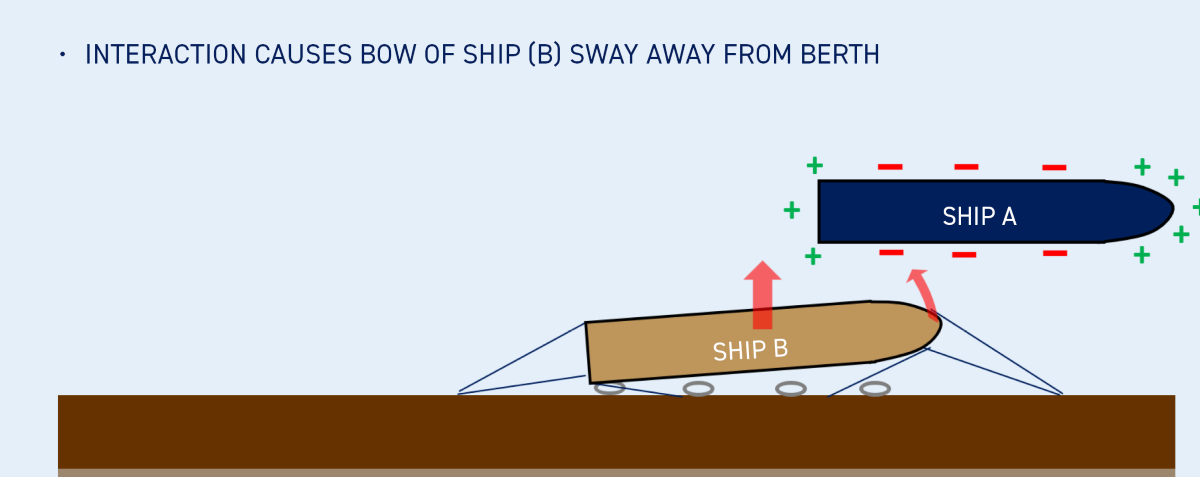
Figure 8: Ship-to-ship interaction when stern passes moored ship
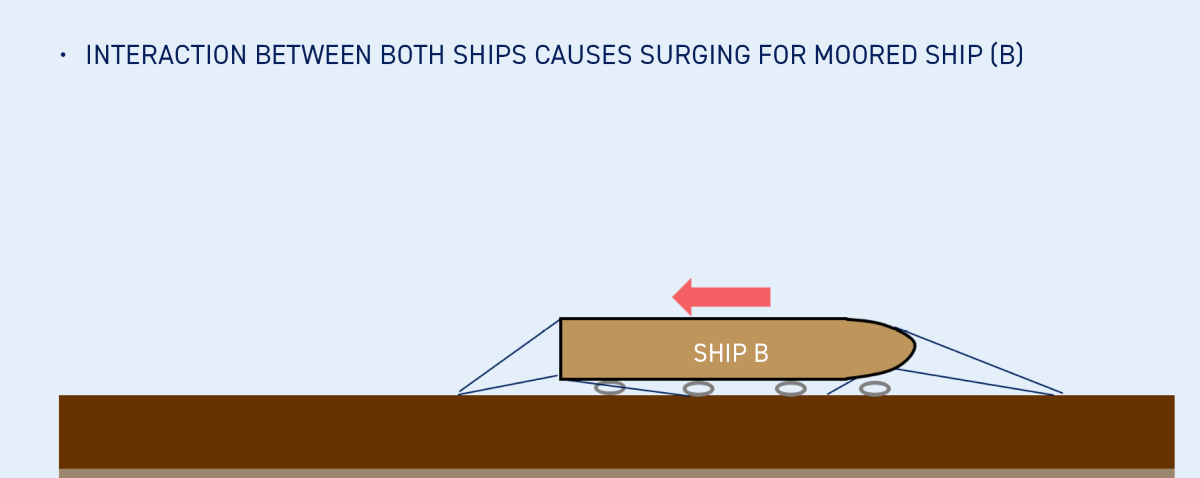
Figure 9: Ship-to-ship interaction when passed moored ship
MAIN FACTORS AFFECTING INTERACTION
In cases where claimants declare that their speed over ground was very low, it’s essential for the party pursuing the claim to understand that when discussing a ship making way or navigating against a strong current, the relevant speed is the speed through water. In essence, speed through water is the relative speed of the surrounding water exerted against the hull(s), whether the ship is in motion or stationary. This is because hydrodynamic force deals primarily with the speed through water more than speed over ground, and that is what critically defines interaction.
Hydrodynamic force is influenced heavily by the speed, and as a rule of thumb, it is believed the change is proportional to the square of the speed. This would therefore mean when the ship doubles its moving speed, the ship may experience a quadruple increase in the interaction force.
Passing distance has a substantial effect, where the interactive force varies significantly with the changes in the distance between both affected ships. This means as the passing distance increases, this effectively decreases the interaction. In busy waterways where there are several moored ships, navigators should allow for larger passing distance. When passing closely is unavoidable, the navigator should reduce the ship’s speed. It’s also recommended to ensure that the ship’s manoeuvring speed aligns with the terminal’s regulated speed limit and is suitable for the current circumstances and conditions.
Another point to note is the blockage effect, the larger the displacement of the ship, the larger the blockage it creates underwater. When a ship with large displacement moves through water, that large blockage displaces more water ahead, to the sides and/or underneath the ship. For example, when a large ship passes a smaller ship, it will have a much larger and more significant effect than two similar-sized ships passing each other.
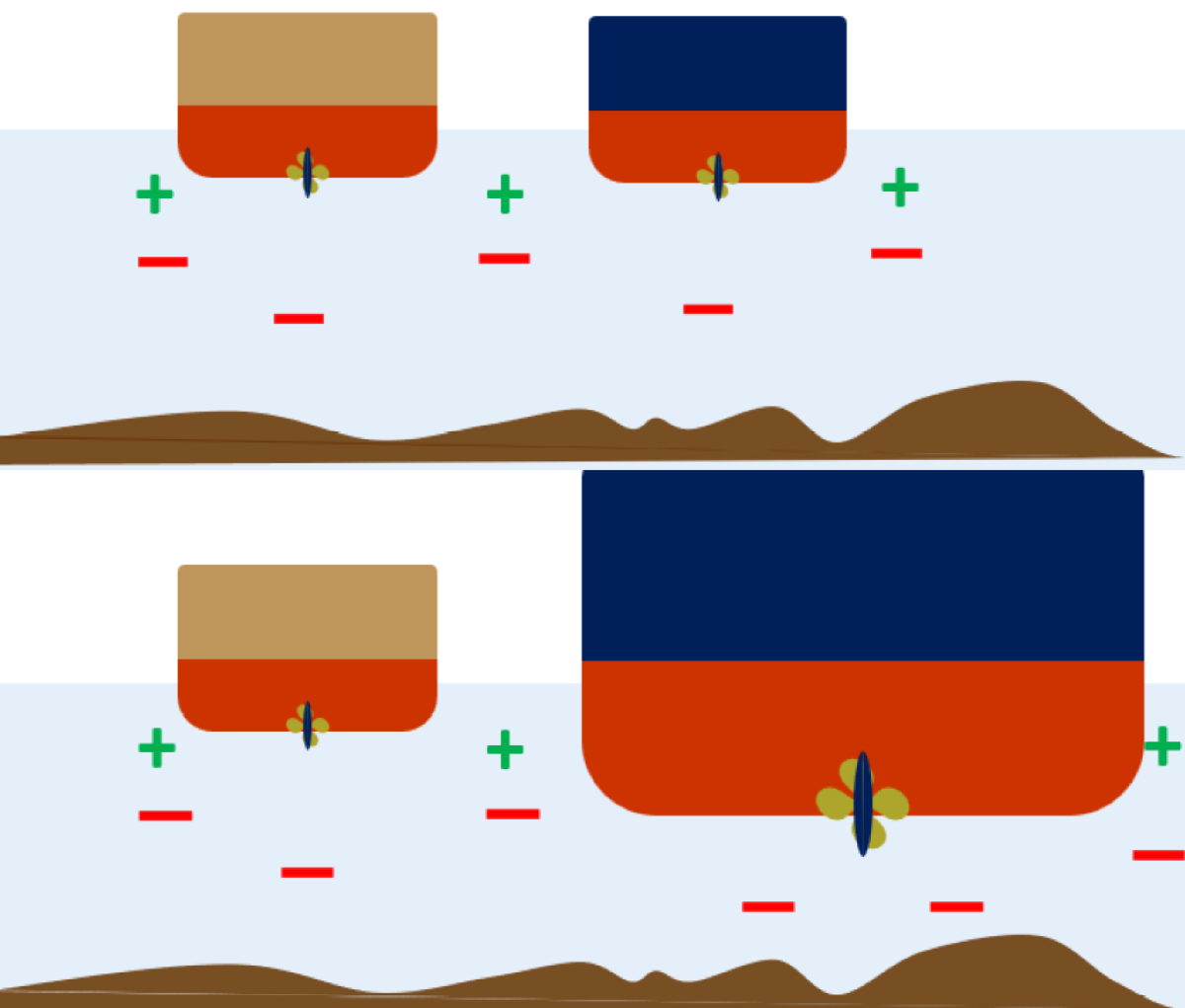
Figure 10. Blockage effect for ships with different displacement
DAMAGE TO OTHER SHIPS WITHOUT CONTACT
There are occasions when one ship can cause damage to other ships without physical contact. The common cause is a ship manoeuvring at high speed or too close to moored ships, creating waves that cause the moored ships to surge.
As the ship moves through the water, it creates a hydrodynamic pressure field that carries energy and propagates outward in all directions, interacting with other moored ships in the vicinity. This interaction can potentially amplify and exacerbate the intensity of the surges when two or more ships are passing nearby. This occurs because the moored ship may experience the combined effects of the hydrodynamic pressure fields from these passing ships. Although this is commonly referred to as ‘wash damage’, ‘wake damage’ or ‘surge damage’, it is technically more accurate to describe them as the hydrodynamic pressure field.
MOORED SHIPS
A conventional mooring arrangement usually involves positioning headlines, stern lines, and spring lines according to industry best practices. These mooring lines achieve greater effectiveness when positioned as close as possible to the horizontal line of the ship’s fore and aft, and their effectiveness often decreases as their angle to the quay increases. They should also have sufficient lead (length) to allow them to absorb and dissipate the energy from the hydrodynamic pressure more effectively. If properly set; the winch brakes should render to allow the mooring lines to shed its tension when subjected to excessive loads.
The ship’s crew should undergo proper training to recognise the dangers in the suggested berthing procedures. This training should also highlight the importance of effective communication and coordination with the terminal.
It is strongly recommended that the Safety Management System (SMS) provides the necessary support in this regard, with appropriate guidance in producing a suitable risk assessment. Factors to consider include the condition of the mooring equipment, effectiveness of mooring arrangement, and the ships proximity to hazards. If necessary, safeguards such as extra mooring lines, having the main engine on short notice for availability, or making provisional arrangements for tugs, may be required.
Throughout the period in port, closely monitor and tend mooring lines to ensure they have the capability to restrain surging and to avoid any slack, particularly in river berths or areas with passing ships to prevent ship from surging at berth. Maintain the ships gangway or accommodation ladder at a safe distance from gantry cranes, ship loaders, bollards or other port fixtures.
If surging at the berth is experienced, consider raising the gangway or accommodation ladder and ensure the ships personnel remain in a safe position when mooring lines come under tension.
PASSING SHIPS
Investigating the passing ship’s speed and its distance from the moored ships alongside the terminal is another aspect of alleged surge damage claims. When a ship is traveling at high speed, it generates a significant amount of hydrodynamic forces, which then travels to the moored ships and causes surging at berth. This can be particularly obvious in rivers, canals and berths where the ship’s motion is more restricted.
The navigators should have a good understanding of the waterway’s characteristics, the current weather conditions and locations of terminals that are particularly sensitive to surge damages. Any local speed limits should be identified and complied with. This information should be determined during the passage planning stage and Master/Pilot Information Exchange (MPX). The master should account for the interaction and surge effect when navigating in narrow waterways by keeping to the centreline of the channel, and they must be aware of the increased water flow and hydrodynamic forces in such areas. Ensure that the ship is not cutting corners at the bends of river channels and passing too close to moored ships.
Operating the ship at lower speed can effectively help to reduce the impact of waves and prevent hydrodynamic surges. However, it is important to keep in mind that it may be a challenge to reduce speed while maintaining control over the ship’s steerage and heading.
In addition, it is also important to have trained crew and to use ship handling techniques to minimise the risk of surge damage in confined waters. This includes having a good understanding of ship handling, a ship’s limitations and manoeuvring characteristics and the time it takes for the main engine to reduce to the speed required when approaching moored ships.
Note that failing to comply with the above precautions, will increase the likelihood of passing ships being held responsible for causing surge damages.
OTHER POTENTIAL DAMAGES
‘Wash’ damage typically results in straining and/or parting of the mooring ropes or damage to the gangway. When the mooring lines are too slack, moored ships can move extensively at berth, potentially causing contact with other ships or quayside structures like bollards, fenders, dolphins, and cargo facilities such as loading arms, cargo hoses, bunker lines, and cranes.
In some extreme cases, hydrodynamic forces can damage cargo or bunker lines, causing mooring lines to part and/or snap back, potentially injuring ship’s crew members in the vicinity.
PRESERVING EVIDENCE
Take pictures of the berth and fenders prior to berthing and right after departing, this is particularly important if calling at a terminal that is known for claims relating to damage to fenders.
When damage occurs due to surging, both the passing ship and the ship that is alongside the berth should demonstrate that they exercised good seamanship. These ships often rely on the playback from ship’s electronic data such as the Automatic Identification System, Voyage Data Recorder, or Electronic Chart Display and Information System to establish whether the passing ships were too close and/or too fast during the time of alleged incident. Where possible take note of passing ships details, particularly the ships speed and passing distance. If the passing ship received any warnings from the local traffic control for exceeding the local speed limit, these details should be recorded.
Furthermore, third party information sources such as those from the traffic control or Vessel Traffic Services (VTS) and shore CCTV footage can assist in resolving claims. Collecting certain physical evidence, such as properly sampling of the mooring brakes and preserving the parted mooring lines with the help of industrial experts, can be beneficial. Any maintenance records and/or certificates to show that mooring equipment was in sound condition should also be retained.
In conclusion, interaction and surge damage in confined waters can be caused by a combination of various factors such as tide and currents, passing distance, waterway depth and width, ship’s draft and speed through water. Therefore, it is important to have the correct navigation equipment and trained crew to minimise the risk of damage. The ship’s master must always notify the Club or local correspondent of any alleged claims from other ships. These claims should be resolved amicably, considering the evidence presented by each party.
For further information, Britannia has previously hosted an online webinar on Surge and Interaction Damage or alternatively Members requiring any further guidance are advised to contact the Loss Prevention Department.
The Club would like to extend our sincere appreciation to Waves Group – Mr. Simon Burnay for contributing his technical inputs on this article.

 English
English